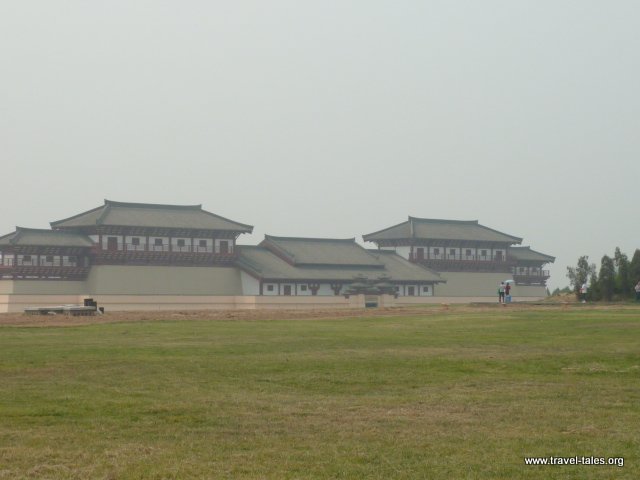That brings to an end the tales of my 2014 travels and I am working on what adventures to have in 2015. There are more tales from my parents’ trip to China in 2013 which I brought to a stop at the Terracotta Army. We pick up their journey in Xi’an the day after that visit.
For our third day we drove out of Xi’an in a different direction to visit the Yangling Mausoleum of the Han Dynasty (Hanyangling) which is near Zhangjiawan Village, about 20 kilometers north of Xian. It is a joint tomb of Liu Qi, a notable emperor of the Western Han Dynasty (206 BC-24AD), and his empress, Empress Wang. It was built in the year 153 AD. It is a magnificent and abundant cultural relic, comprising the emperor’s tomb, empress’ tomb, the south and north burial pits, ceremonial site, human sacrifice graveyard and criminals’ cemetery.
Neatly arranged and centred with the emperor’s tomb, it reveals the strict hierarchical social structure. The emperor’s tomb is at the centre of the mausoleum. The subterranean chamber has passages on its four sides, thus the shape assembles the Chinese character ‘ya (亚)’. Around the tomb is a tall wall on each side, with four big gates at the middle of each wall. The south gate has been unearthed and opened for tourists.
A brick chessboard and the biggest tile have been found at this site. The empress’ tomb is in the east, 450 meters away from the emperor’s tomb and is much smaller in comparison. It is also square, and is 350 meters in length. A wall made of pounded earth encircles the tomb, with four gates on each side. The underground chamber is also laid out like the Chinese character ‘ya’. The earth on top of the tomb measures 24.49 meters. Lots of outside pits have been found around it. In the 1990s, archaeologists excavated ten outside pits. Unearthed burial objects include naked pottery figurines, chariots and horses, weapons, articles of everyday use and a large number of pottery animals.
It was explained that this tomb was much less exotic than the famous warriors we saw yesterday because this emperor had not wanted to show off his wealth. The warriors etc. are all about one third life size. They are known as the naked warriors because each one is an identical terracotta body but originally they were all dressed according to their position in silk clothing which has meantime rotted away. They also had wooden arms which have decayed too. However here again there is a large area devoted to an army to defend the tomb of the emperor. It is much closer to the tomb itself which at present is still an unopened mound – we did not discover why it is still unopened.
This post is an extract of my mother’s travel journal written during a tour of China in 2013.
For daily pictures you can follow me on tumblr. at www.traveltash.tumblr.com, like the Travel-Tales page on Facebook at www.facebook.com/traveltalesorg and follow me on Twitter @tash_higman.




